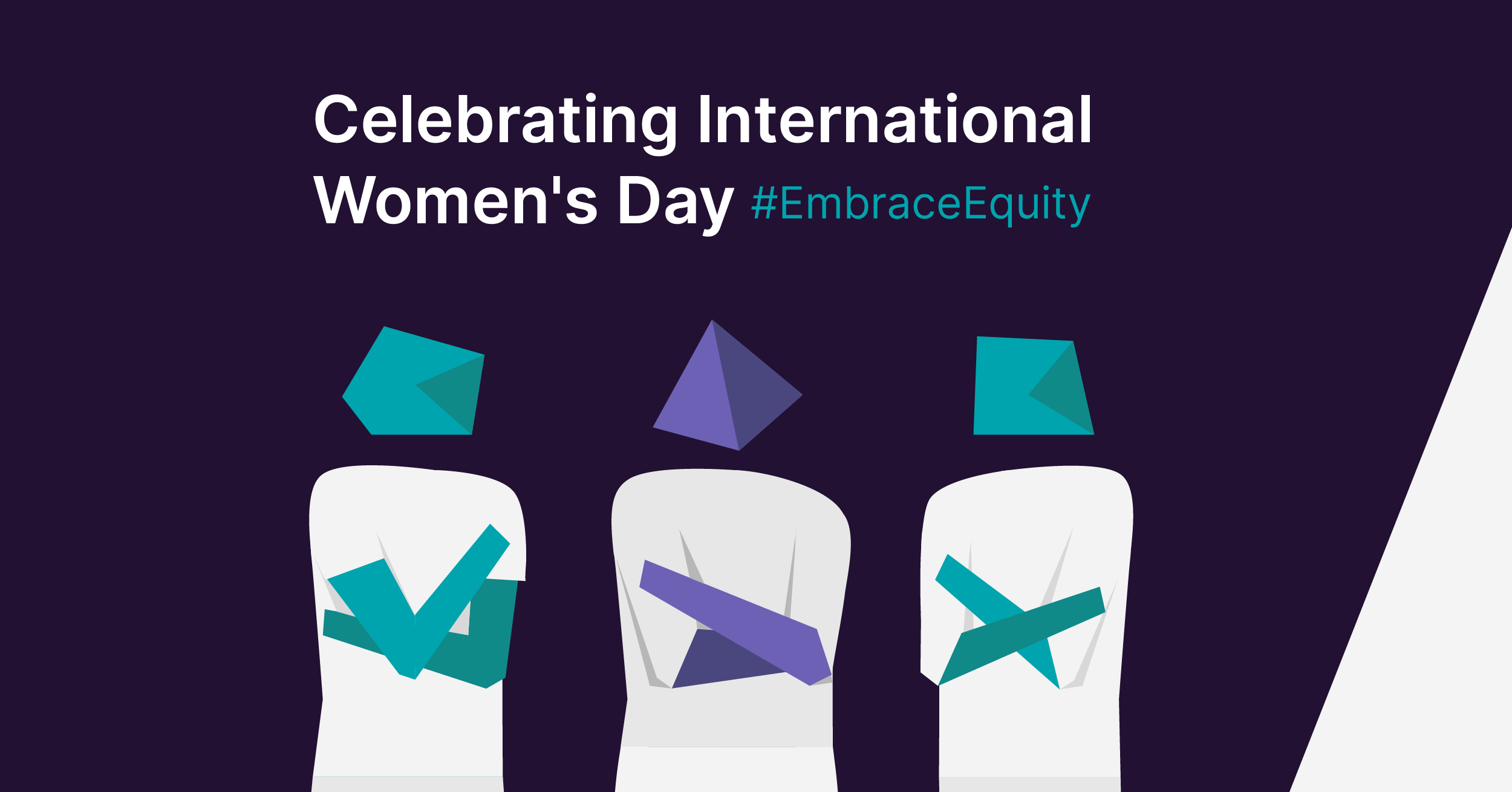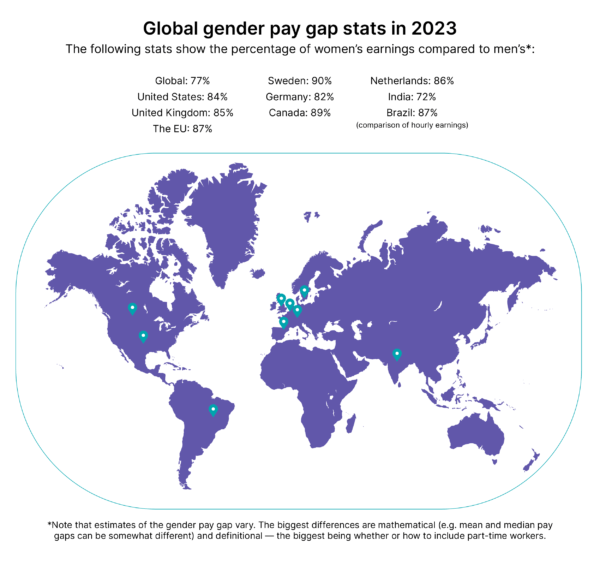On 8 March, we celebrate International Women’s Day — a global day to celebrate the social, economic, cultural, and political achievements of women, while also raising awareness about gender inequality and advocating for women’s rights. This year’s theme is #EmbraceEquity, which calls on all of us to recommit to ensuring every woman has access to the same opportunities as her male counterparts.
At the current rate, the World Economic forum estimates that it will take 132 years to close the global gender pay gap. That means waiting until 2155 for equal pay! The women of today can’t afford to wait that long. The causes of the pay gap are complex and interwoven, resulting from structural inequities that become embedded within businesses, economies, and societies. To speed up progress, we absolutely have to embrace equity in all its forms.
While it has become table stakes for many companies to make efforts to deliver gender pay equity, another major contributor to the gender pay gap — unequal access to opportunity — is frequently overlooked. To achieve a world without gender pay gaps, companies must focus their attention on both.
Where the global gender pay gap stands in 2023
Despite some progress in recent decades, women worldwide still earn significantly less than men. The alarming fact remains that globally women earn only 77% of the wages men do. A quick scan of the current gender pay gap for countries worldwide shows that we require significantly more progress to be made:*
- United States: On average, women earn 84 cents for every dollar earned by men
- United Kingdom: On average, women earn 85 pence for every pound earned by men
- The EU: On average across the EU, women earn 87% of men’s earnings
- Sweden: Women earn 90% of men’s earnings
- Germany: Women earn 82% of men’s earnings
- Canada: On average, women earn 89 cents for every dollar earned by men
- Netherlands: Women earn 86% of men’s earnings
- India: Women earn 72% of men’s earnings
- Brazil: Women’s hourly earnings are 87% of men’s
*Note that estimates of the gender pay gap vary. The biggest differences are mathematical (e.g. mean and median pay gaps can be somewhat different) and definitional — the biggest being whether or how to include part-time workers.
These numbers are sobering, and they serve as an urgent reminder that we need to embrace equity when it comes to both pay and opportunity. There’s a massive economic cost to the gender pay gap: McKinsey & Company estimates that achieving global gender equality could add $12 trillion to global economic growth. The IMF estimates that countries that close the gender gap in women’s labour force participation could increase GDP by an average of 35%.
How pay inequity contributes to the pay gap
It’s a common misconception that “100% gender pay equity” means that the gender pay gap has been closed. That’s not the case because “pay gaps” are not the same as “pay inequities.” Gender pay equity means paying people equally for doing the same, similar, or comparable work regardless of their gender. Rather, compensation is based on neutral, job-related factors such as skills, effort, responsibility, and working conditions.
Pay inequity is a significant contributor to the pay gap between men and women. But unfair wages alone fail to fully account for the pay gap, which also results from a lack of access to higher paying jobs, unequal representation in leadership roles, and biased hiring practices. Unfortunately, these disparities are often magnified for women of color. The theme of this year’s International Women’s Day is to “Embrace Equity,” demanding comprehensive measures that would ensure not only equitable pay but also equitable access to career opportunities.
How opportunity inequity contributes to the pay gap
The gender pay gap is rooted in a complex web of systemic issues that make it difficult for women to reach their full potential. Of all these issues, opportunity inequity plays a tremendous role in preventing women from earning the same wages as their male counterparts. Gender opportunity equity ensures that every employee has the same access to employment, advancement ,and development opportunities, irrespective of their gender.
Caregiving responsibilities and motherhood play no small part in suppressing wage growth for women. Caregiving obligations can cause women to take on less demanding jobs or reduced hours that don’t pay as well. Moreover, caregiving duties often limit opportunities to acquire additional skills or invest in long-term career paths. And these losses compound over time, leading to a high disparity in lifetime earnings between men and women.
Women also face a “broken rung” that holds them back from higher-paying jobs. According to McKinsey/LeanIn research, women are 13% less likely than white men to be promoted. The promotion rate difference is even larger for women of colour at 18%. Inequitable promotion rates directly contribute to the pay gap by preventing women from moving up into the higher-level positions that offer higher pay.
How businesses can embrace workplace equity to close their pay gaps
International Women’s Day is an important reminder that the work to close the gender pay gap is far from over. While the progress of the past few decades has been positive, there is still more that must be done.
To accelerate progress towards closing pay gaps, businesses need to conduct workplace equity analyses that ensure that women are both paid equally for equal work and given equal access to career opportunities through fair hiring, performance ratings, promotions, career development, and retention policies and practices. Syndio’s annual Workplace Equity Trends Report provides guidance on how businesses can accomplish this mission, so be sure to get a copy at the link below to stay up-to-date on trends and best practices.
To achieve an equitable future, organisations must strive to create equitable workplaces where everyone is rewarded according to their qualifications, experiences, and dedication. In other words, when everyone has equitable access to opportunities and compensation based on merit, the gender pay gap will begin to shrink. It’s time for us to #EmbraceEquity — not just today, but every day — so that everyone has an equal chance for success.



